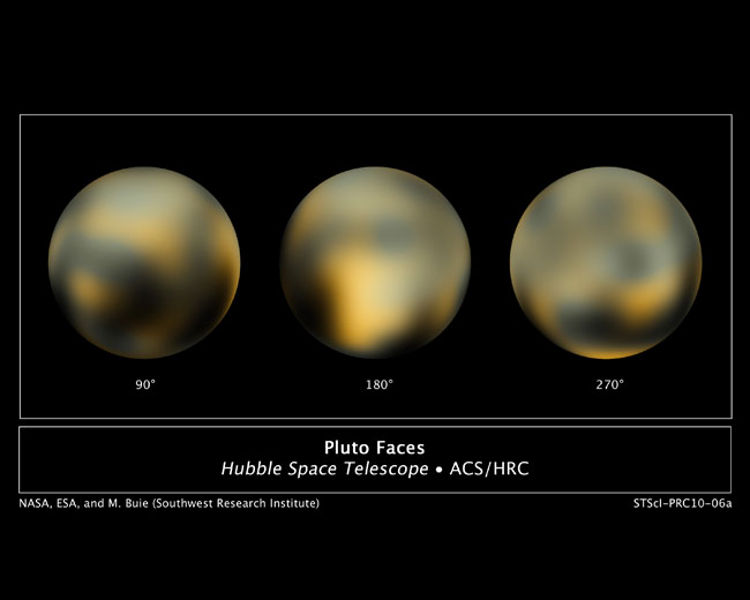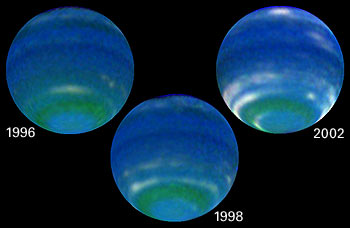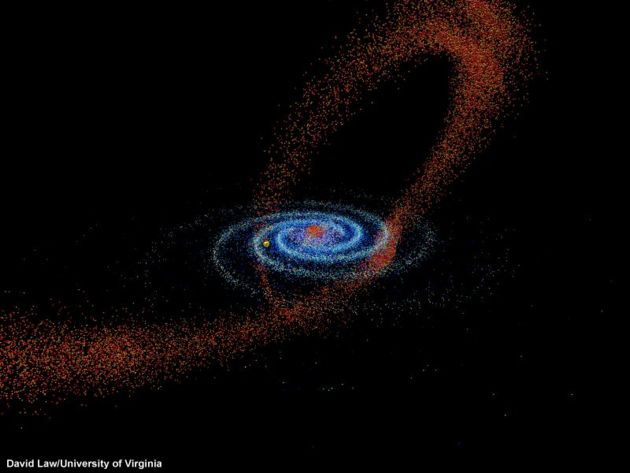Now, is this meshing together of these two galaxies causing changes in our Solar System considering that it is now passing through the path of Sagittarius’ debris during its 240 million-year orbit around the Milky Way galaxy? As Majewski says, "Remarkably, stars from Sagittarius are now raining down onto our present position in the Milky Way.”
Is Global Warming A Galactic Phenomenon?
Here are some of the effects on the Solar System as a whole as it passes through the debris of the Sagittarius Galaxy (or should I say the Solar System passing through the Milky Way Galaxy??):
• Higher energy levels due to the collusion are probably causing our Sun to burn hotter and emit higher energies. Check out the Sun’s behavior of late. Massive CMEs with more to come! This is probably what’s causing global warming and not due to man made carbon emissions and as some scientists contend due to methane produced by cows!! (What a load of goop!)
A Coronal Mass Ejection from the Sun.
NIAAS
• A growth of dark spots on Pluto and newly reported auroras on Saturn.
• Increased incidents of Auroras on Saturn

Glowing auroras on Saturn
Discovery Channel
• The atmospheres of five of the planets and the Earth's moon are changing.
• Uranus and Neptune appear to have had recent pole shifts. When the Voyager II space probe flew past Uranus and Neptune, the apparent north and south magnetic poles were sizably offset from where the rotational pole was in earlier recordings. In one case, it was 50 degrees off, and in the other case the difference was around 40 degrees.
• A change in light intensity and light spot dynamics on Neptune.

Notice in these views by the Hubble Space Telescope
that Neptune's blue-green atmosphere has brightened
considerably.
Credit: NASA, L. Sromovsky, and P. Fry,
University of Wisconsin-Madison
• The doubling of the magnetic field intensity on Jupiter (based upon 1992 data), and a series of new states and processes observed on this planet.
• A series of Martian atmosphere transformations increasing its biosphere quality.In particularly, a cloudy growth in the equator area and an unusual growth of ozone concentration. The Martian atmosphere claim scientists is getting sizably thicker than it was before. The Mars Observer probe in 1997 lost one of its mirrors, which caused it to crash. This happened because the atmosphere was about twice as dense as NASA had calculated.
The icecaps on Mars virtually melted
within just one year, causing 50-percent
changes in surface features and its atmospheric
density has risen by 200 percent since 1997.
Source: weinholds
• Significant physical, chemical and optical changes observed on Venus; an inversion of dark and light spots detected for the first time, and a sharp decrease of sulfur-containing gases in its atmosphere. Venus is also showing marked increases in its overall brightness.

A sudden bright spot that appeared in the clouds of
Venus has scientists stumped as to its cause. Venus’
bright spot, first noticed by amateur astronomer Frank
Melillo of Holtsville, NY on July 19, is not the first such
brightening noticed on our cloudy neighbor, said planetary
scientist Sanjay Limaye of the University of Wisconsin-
Madison.
Katy Texas
• Jupiter's energetic charge has risen so high that there is actually a visible tube of ionizing radiation that's formed between the surface of Jupiter and its moon Io. You can actually see the luminous energy tube in photographs that have been taken recently.
These images, taken by the Hubble Space Telescope, reveal changes in Jupiter’s auroral emissions and how small auroral spots just outside the emission rings are linked to the planet’s volcanic moon, Io. The images represent the most sensitive and sharply-detailed views ever taken of Jovian auroras. The top panel pinpoints the effects of emissions from Io, which is about the size of Earth’s moon. The black-and-white image on top, taken in visible light, shows how Io and Jupiter are linked by an invisible electrical current of charged particles called a “flux tube.”
Now all this has been taking place since the last decade or two. What’s in store for us in the very near future?
Back to my question, should we be worried? Perhaps we should be! 
References:
www.tmgnow.com...
viewzone2.com...
www.americanchronicle.com...
www.heartcom.org...
www.weinholds.org...
3dastronomer.com...
edit on 15-4-2011 by OrionHunterX because: (no reason given)
~COMMENTARY FROM THE GALACTIC FREE PRESS~ THERE WILL BE SOME MORE INFORMATION ABOUT THIS ARTICLE IN OUR NEXT PAPER, STAY TUNED AND TUNE IN~





Comments
Humm.....
Let's see..you are from the Sagattarian Galaxy...I am from the Planet Ur-Anus....
You are in the center....DOES THAT MEAN I AM FROM THE ASSHOLE OF THE MILKY WAY?????
ROFLMAO
LOVE YOU/LOVE ME
~WE ALL CAME FROM THERE~
ARE YOU BEING AN ASSHOLE? LOL SAYS FATHERGOD... WE ALL CAME HERE FROM THE SAG GALAXY, LOVE MOM AND DAD
Welcome Home into,The Kingdom of Heaven on Earth=Heart, We Love you Unconditionally!!